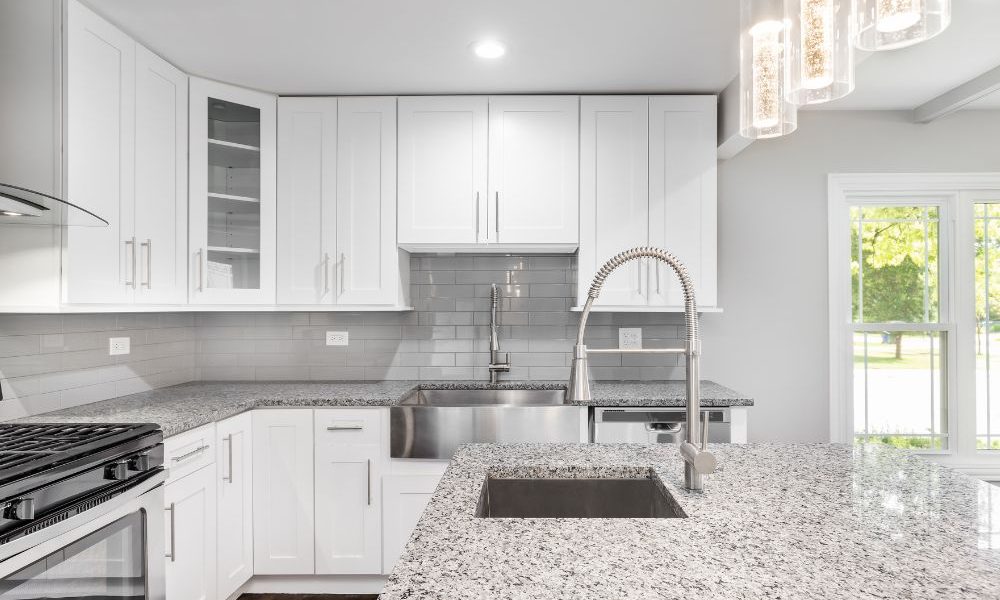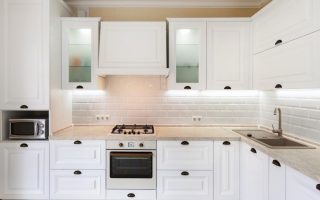Countertop installation is a crucial aspect of any kitchen or bathroom renovation. One common question is whether countertops are glued to cabinets or if mechanical fasteners are used. The answer depends on several factors, including the countertop material, size, and desired aesthetic. In this article, we’ll explore the different methods of securing countertops, their benefits, and when to use each approach. We’ll also share expert insights, practical tips, and personal anecdotes to help you make an informed decision for your project.
Understanding the Basics of Countertop Installation
Adhesive Bonding
Adhesive bonding is a popular method for securing countertops to cabinets. This approach involves using adhesives like silicone or construction adhesive to create a strong, invisible bond between the countertop and the cabinets. Janice Teague, a certified kitchen designer, explains:
“Adhesives like silicone or construction adhesive provide a strong, invisible bond between the countertop and the cabinets, creating a seamless appearance.” – Janice Teague (Source: Kitchen & Bath Design News)
The seamless appearance achieved with adhesives makes this method ideal for creating a sleek, modern look in your kitchen or bathroom.
Mechanical Fastening
Mechanical fastening uses screws, brackets, or other hardware to attach the countertop to the cabinets. This method is particularly useful for heavier materials or countertops with large overhangs. Lee Wallender, a home improvement writer, notes:
“Mechanical fasteners, such as screws or brackets, offer a more secure attachment, especially for heavier materials or countertops with large overhangs.” – Lee Wallender (Source: The Spruce)
Mechanical fasteners provide additional stability and can be essential for ensuring the longevity and safety of your countertops.
When to Use Adhesive Bonding
Ideal Scenarios for Adhesive Bonding
Adhesive bonding is often preferred for materials that require a seamless, uninterrupted surface, such as solid surface or quartz countertops. It is also ideal for lighter materials where mechanical fasteners might be overkill.
In my own kitchen renovation, we chose quartz countertops. The installers used a high-quality silicone adhesive to secure the countertops to the cabinets. The result was a beautiful, seamless surface that looked as if it had always been part of the kitchen.
Benefits of Adhesive Bonding
- Seamless Appearance: Adhesive bonding provides a clean, uninterrupted look, which is particularly desirable for modern and minimalist designs.
- Flexibility: Adhesives can absorb minor movements and vibrations, reducing the risk of cracking.
- Ease of Installation: Adhesives are relatively easy to apply and do not require specialized tools.
Considerations for Adhesive Bonding
- Surface Preparation: Proper surface preparation is crucial for ensuring a strong bond. Both the countertop and cabinet surfaces must be clean and free of dust or grease.
- Curing Time: Adhesives need time to cure fully, which can delay the use of the countertop.
When to Use Mechanical Fastening
Ideal Scenarios for Mechanical Fastening
Mechanical fastening is recommended for heavy materials like granite, marble, or concrete countertops. It is also essential for countertops with large overhangs or those that will bear heavy loads. Paul McAlary, president of Main Line Kitchen Design, emphasizes:
“In some cases, a combination of adhesive and mechanical fasteners is used to provide both strength and aesthetics.” – Paul McAlary (Source: Main Line Kitchen Design)
Benefits of Mechanical Fastening
- Stability: Mechanical fasteners provide robust support, essential for heavy or high-traffic countertops.
- Immediate Use: Unlike adhesives, mechanical fasteners do not require curing time, allowing immediate use of the countertop after installation.
- Easy Removal: Countertops secured with mechanical fasteners can be more easily removed for repairs or replacement.
Considerations for Mechanical Fastening
- Visibility: Depending on the design, fasteners may be visible, which might not be desirable for all homeowners.
- Installation Complexity: Mechanical fastening can be more complex and may require specialized tools and skills.
Combining Adhesive Bonding and Mechanical Fastening
The Hybrid Approach
For many installations, a combination of adhesive bonding and mechanical fastening is the best approach. This method offers the seamless appearance of adhesives with the added stability of mechanical fasteners. Sean Juneja, CEO of Royal Stone, explains:
“Countertops can be secured using either adhesive or mechanical fasteners, and the best method often depends on the material, size, and desired look of the countertop.” – Sean Juneja (Source: Royal Stone)
Personal Experience: Using Both Methods
In a recent bathroom renovation, we installed a marble countertop. Given the weight of the marble, the installers used a combination of silicone adhesive and metal brackets. This hybrid approach ensured the countertop was securely attached while maintaining a clean, seamless appearance.
Expert Insights and Studies
Performance Evaluation of Adhesive-Bonded Stone Countertops
A study published in the Journal of Materials in Civil Engineering titled “Performance Evaluation of Adhesive-Bonded Stone Countertops” investigated the performance of adhesive-bonded stone countertops under various loading conditions. The results showed that adhesive bonding can provide a strong and durable connection between the countertop and the cabinets, even under heavy loads.
Comparative Analysis of Mechanical and Adhesive Fasteners
Another study in the Construction and Building Materials journal compared the performance of mechanical fasteners (screws and brackets) and adhesive bonding for countertop installation. The study found that both methods can provide adequate support, but the combination of both offers the highest level of stability and durability. The study also highlighted the importance of proper surface preparation and adhesive selection for optimal bonding.
Practical Tips for Homeowners
Choosing the Right Method
When deciding between adhesive bonding, mechanical fastening, or a combination of both, consider the following factors:
- Countertop Material: Heavier materials like granite or marble may benefit from mechanical fasteners, while lighter materials like quartz can often be secured with adhesives.
- Overhangs and Loads: For countertops with large overhangs or those that will bear heavy loads, mechanical fasteners provide added stability.
- Aesthetic Preferences: If a seamless appearance is important, adhesive bonding or hidden fasteners are preferable.
Consulting with Professionals
Always consult with a professional installer or contractor to determine the best attachment method for your specific project. Kermit Baker, Chief Economist at the American Institute of Architects, advises:
“It’s important to choose an attachment method that is appropriate for your specific countertop material and installation requirements. Consult with a professional for guidance on the best approach for your project.” – Kermit Baker (Source: Remodeling Magazine)
Conclusion: Finding the Best Attachment Method for Your Countertops
Countertop installation is a critical component of any kitchen or bathroom renovation. Understanding the differences between adhesive bonding and mechanical fastening can help you make an informed decision that ensures both the beauty and stability of your countertops.
Remember, the right method for your project depends on the countertop material, the specific requirements of your installation, and your personal preferences. With the right approach, you can enjoy beautiful, durable countertops that enhance the overall look and functionality of your space.




